As privacy regulations tighten and third-party cookies disappear, CMOs face a fundamental question: which data architecture will drive growth in a consent-first world? Answering the CDP vs DMP question is a defining business decision that shapes how retail brands connect with their customers, measure impact, and sustain growth in the age of personalization.
For years, Data Management Platforms (DMPs) powered advertising efficiency through cookie-based audience targeting. But today’s reality demands persistent, unified, and actionable customer intelligence. That’s where Customer Data Platforms (CDPs) have emerged as the strategic core of modern retail marketing. The shift from DMP to CDP reflects a deeper transformation, from rented to owned data, from campaigns to relationships, and from short-term conversions to long-term loyalty.
- CDPs replace DMPs as the strategic core of retail data. DMPs still support upper-funnel campaigns, but CDPs lead data unification, personalization, and predictive CX using first-party intelligence.
- Privacy and data ownership drive the shift. With third-party cookies fading and regulations tightening, retailers must move from renting audiences to building customer data equity.
- AI-powered CDPs enable predictive personalization at scale. Real-time segmentation and omnichannel activation lift CLV and ROAS with timely, relevant experiences.
- DMPs are complementary, not core. Modern stacks fold limited DMP functions (e.g., audience expansion) into CDP-led frameworks for full-funnel efficiency.
- The future belongs to data-owning brands. Mastering first-party data turns every interaction into measurable value—building loyalty, trust, and sustainable growth.
Understanding the core difference between CDPs and DMPs
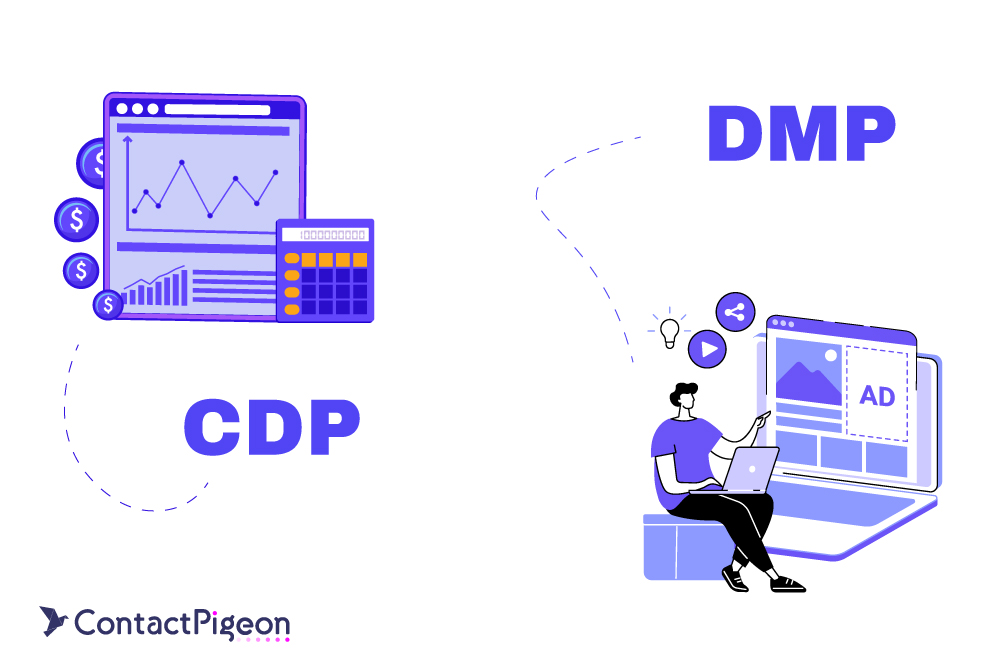
Before diving into strategic implications, it’s essential to understand what truly separates a Customer Data Platform (CDP) from a Data Management Platform (DMP), not just in technology, but in purpose and value creation.
What is a Customer Data Platform (CDP)?
A CDP is a first-party data engine that unifies customer information across all retail touchpoints, eCommerce, POS, CRM, mobile apps, loyalty programs, and even in-store interactions. It consolidates fragmented data into a single, persistent customer profile, enabling real-time personalization and predictive insights.
For retail marketers, this means no more silos: every message, recommendation, or offer is informed by a customer’s complete behavioral, transactional, and engagement history. CDPs don’t collect data, they activate it, turning information into measurable CX outcomes.
Core strengths:
- Persistent identity resolution: Recognizes a single customer across multiple channels and devices.
- Real-time activation: Feeds unified profiles directly into email, SMS, push, and on-site personalization tools.
- Privacy-first framework: Built around first-party and zero-party data, ensuring compliance and long-term data ownership.
What is a Data Management Platform (DMP)?
A DMP, by contrast, was built for a different era, one dominated by advertising reach and third-party cookies. It aggregates anonymous audience data from external sources to create segments for ad targeting and retargeting. While valuable for acquisition, DMPs lack the depth and persistence required for long-term engagement or loyalty.
Core limitations:
- Short data lifecycle: Third-party data is anonymized, expiring quickly.
- Probabilistic identity: Audience profiles are based on browser or device IDs, not real customers.
- Limited activation: Primarily supports paid media rather than owned or earned channels.
At a glance: CDP vs DMP in retail
In essence, CDP vs DMP reflects a strategic shift from buying audiences to building relationships, from adtech to martech, and from visibility to true customer intelligence.
| Attribute | CDP | DMP |
|---|---|---|
| Data Source | First-party (owned) | Third-party (rented) |
| Customer Identity | Persistent & unified | Anonymous & temporary |
| Use Case | Personalization, CX, retention | Advertising & reach |
| Data Compliance | Privacy-first | Cookie-dependent |
| Value Focus | Long-term loyalty | Short-term acquisition |
Why this debate matters for retail CMOs in 2025
The CDP vs DMP debate is not about tools, but rather a competitive advantage. As retail marketing shifts from ad-centric growth to customer-centric strategy, the choice between these platforms defines how effectively a brand can drive loyalty, lifetime value, and measurable ROI.
The phaseout of third-party cookies has drastically reduced the reach and accuracy of retargeting campaigns. Data Management Platforms (DMPs), once central to audience acquisition, now face diminishing returns as privacy laws tighten and browser-based tracking disappears. In their place, Customer Data Platforms (CDPs) have emerged as the central nervous system of modern retail marketing, unifying data, powering automation, and enabling predictive customer insights.
Data ownership & compliance
Retailers can’t rely on borrowed audiences anymore. CDPs are built on first-party and zero-party data, giving brands full control, transparency, and long-term compliance. In contrast, DMPs depend on third-party cookies and external brokers, whose data-sharing models are increasingly restricted under GDPR, CCPA, and EU AI Act frameworks.
Omnichannel expectations
Today’s retail consumers expect fluid, personalized experiences across every channel, from web and mobile to in-store and loyalty programs. Only a CDP for retail can unify these touchpoints, ensuring that every interaction feels consistent, relevant, and data-informed.
Measurable impact
Brands using retail customer data platforms report significantly stronger engagement and retention metrics compared to those relying solely on adtech systems. According to the Segment/Aberdeen Report, companies leveraging CDPs experience 2.9× higher year-over-year revenue growth and 4.9× greater growth in cross-sell and up-sell revenue than those without one.
How CDPs power the next generation of retail personalization
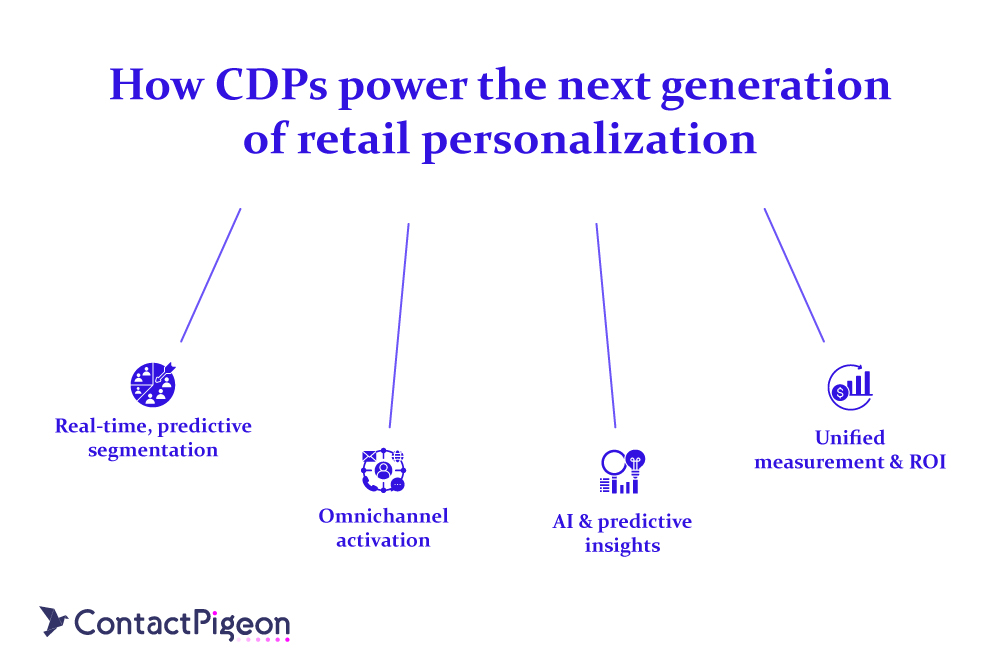
Personalization has moved from being a marketing differentiator to a revenue-driving necessity that can predict what customers will need next, when, and through which channel. The modern Customer Data Platform (CDP) sits at the core of this shift, transforming scattered data into precise, actionable insights.
Real-time, predictive segmentation
Unlike legacy systems that segment audiences on static attributes, CDPs use AI-driven clustering to group customers by behavior, recency, frequency, and value. These dynamic segments fuel automated campaigns such as browse abandonment reminders, replenishment prompts, and loyalty renewals, delivered at the perfect moment in each customer’s journey.
For instance, a grocery retailer can leverage CDP-powered insights to identify high-frequency shoppers and automatically promote restock bundles or complementary items, maximizing both convenience and AOV. This type of real-time personalization drives measurable increases in engagement and conversion, without additional ad spend.
Omnichannel activation
A CDP for retail bridges the gap between digital and physical experiences. By integrating data across email, SMS, web, mobile apps, and in-store touchpoints, it enables consistent messaging and contextually relevant offers at every interaction.
This omnichannel orchestration not only amplifies conversion rates but also strengthens brand perception. When personalization feels effortless and consistent, whether online or in-store, customers perceive higher value and are more likely to repurchase. As a result, retailers see measurable lifts in CX metrics such as engagement rate, session duration, and repeat purchase frequency.
AI & predictive insights
AI-enhanced CDPs go beyond segmentation to deliver predictive intelligence. They forecast churn risk, next-best product recommendations, and optimal engagement timing, allowing marketers to act before opportunities are lost. The retail customer data platform effectively becomes the brand’s personalization brain, analyzing signals in real time and orchestrating the right message, to the right person, through the right channel.
Unified measurement & ROI
Beyond execution, CDPs also unify performance reporting and customer journey analytics. Instead of tracking impressions or last-click attribution, retail CMOs can now measure incremental revenue per segment, campaign profitability, and retention lift.
The evolving role of DMPs in the post-cookie era

Once the backbone of digital advertising, Data Management Platforms (DMPs) are no longer the central pillar of retail marketing. The deprecation of third-party cookies has reduced their precision in audience targeting, but not their usefulness. For large retailers running upper-funnel and cross-channel campaigns, DMPs still play a supporting role in reaching new audiences at scale.
From core platform to complementary tool
Today, a DMP’s value lies in complementing rather than replacing a CDP. It can extend reach and refine audience modeling, but it cannot sustain long-term customer relationships. That’s why most retailers are consolidating their martech ecosystems, integrating select DMP capabilities such as anonymized audience expansion or media optimization into hybrid CDP frameworks.
A retail CMO uses a CDP to unify all first-party data, manage consent, and deliver personalized engagement across owned channels. At the same time, a lightweight DMP supports programmatic acquisition through look-alike modeling. This balance allows the brand to maintain top-of-funnel visibility while keeping full control of its customer data. In a privacy-first world, the leaders will be those who transform owned data into a strategic advantage, using DMPs not as personalization engines, but as amplifiers of reach within a CDP-led strategy.
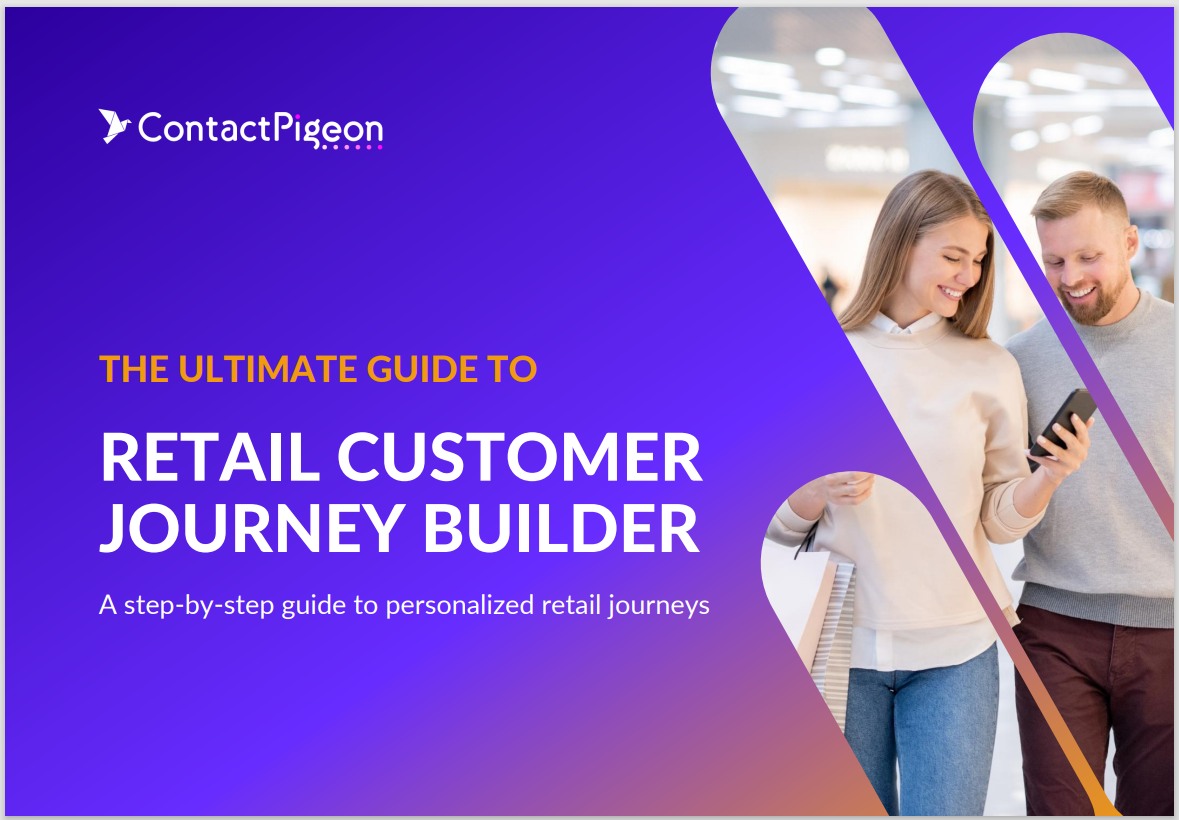
Build smarter customer journeys and activate AI-driven personalization for repeat purchases.
Choosing the right data platform for your retail strategy
For retail CMOs, selecting between a Customer Data Platform (CDP) and a Data Management Platform (DMP) isn’t a technical choice, it’s a strategic one. The right foundation defines how efficiently your organization can collect, activate, and protect customer data while maximizing long-term marketing ROI.
When to choose a CDP
A CDP is the right investment when your growth depends on first-party data ownership, identity resolution, and omnichannel customer experience. CDPs help retailers move beyond audience-based marketing to relationship-based marketing, where every interaction compounds into measurable value.
- You aim to grow Customer Lifetime Value (CLV) through loyalty optimization and predictive personalization.
- You need to simplify your martech stack by integrating CRM, analytics, and marketing automation into one unified ecosystem.
- You view personalization and data governance as central to your brand strategy.
When to keep or complement with a DMP
A DMP still has purpose when your strategy relies on upper-funnel acquisition or large-scale paid media. In these cases, a DMP can extend your CDP’s capabilities without duplicating its function.
- You run high-budget campaigns that depend on third-party audiences for reach.
- You need ad frequency control and cross-platform media optimization.
- Your focus is on awareness rather than retention.
CDP vs DMP evaluation checklist for CMOs
For most retailers, the optimal configuration is CDP-led and DMP-supported, ensuring full-funnel continuity while retaining control of customer data and relationships.
| Criteria | CDP | DMP |
|---|---|---|
| Ownership of Data | ✅ You own it | ❌ Third-party dependent |
| Identity Resolution | ✅ Persistent & unified | ⚠️ Anonymous |
| CX Activation | ✅ Real-time, omnichannel | ❌ Limited to ads |
| Future-Proof in 2025 | ✅ Aligned with privacy-first marketing | ⚠️ Declining relevance |
The bottom line: Data belongs to the brand
In the CDP vs DMP discussion, the real question isn’t about platforms, it’s about ownership. Who truly owns the customer relationship?
Retailers that invest in Customer Data Platforms build direct, enduring connections grounded in trust, transparency, and personalized value. By owning their data, they also own the customer experience, turning insight into loyalty and every interaction into incremental growth.
Data Management Platforms will continue to serve a tactical role, but their influence is fading as the market shifts toward first-party data mastery. The future belongs to brands that can translate data into differentiated experiences, where every click, visit, and purchase contributes to a smarter, more human journey.
Ready to unify your data and personalize every customer journey? Discover how ContactPigeon’s retail CDP empowers real-time insights and omnichannel activation.


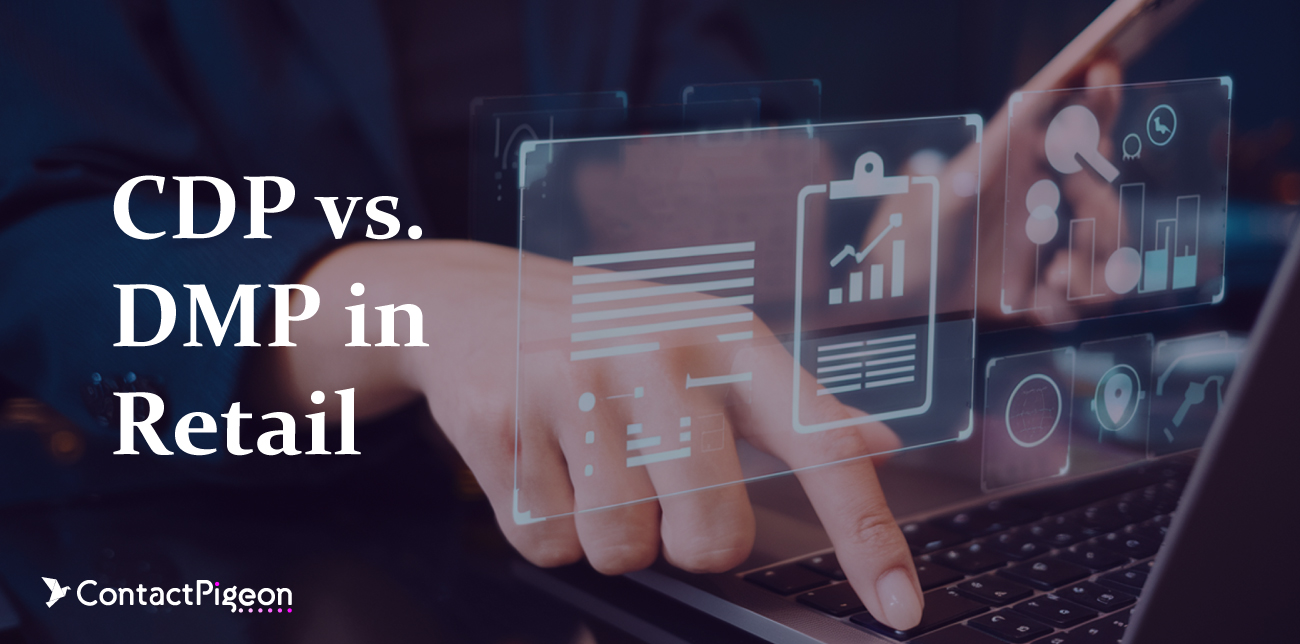
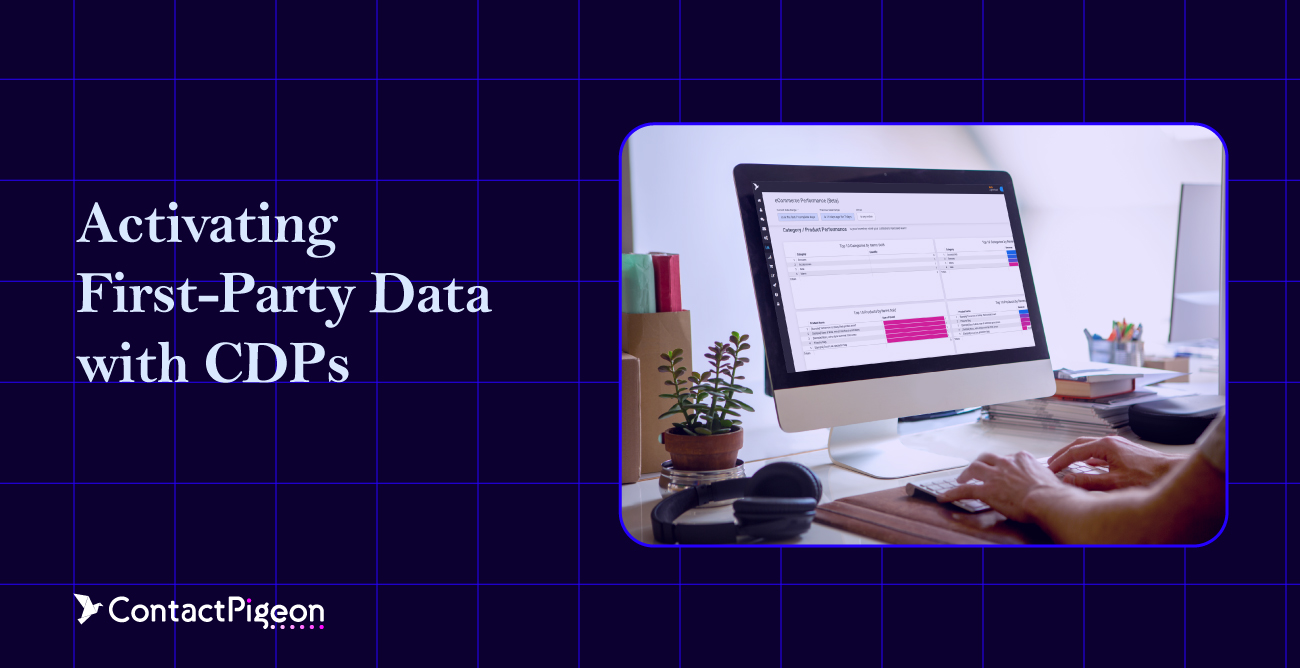
![Benchmarking Growth Strategies of Top Fashion Retailers [Study]](https://blog.contactpigeon.com/wp-content/uploads/2025/11/top-fashion-retailers.jpg)